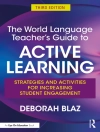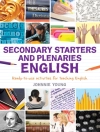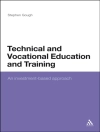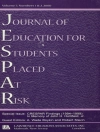The future of education centers empowered students in a global learning ecosystem.
Despite decades of reform, the traditional borders of education—graduation, curriculum, classrooms, schools—have failed to deliver on the goals of excellence and equity.
Despite massive societal changes, education remains controlled by an old mindset. It is time to change that limiting mindset and, more importantly, the ineffective practices in education. To truly serve all learners, future classrooms must remove the boundaries of learning and become student-centered, culturally responsive, and personalized—supportive and equitable environments where each student can direct their own learning and seek multiple pathways to skills and knowledge in a global learning ecosystem. This compelling call for transformative change offers all involved in education
- Evidence-based arguments that reveal the need to break the traditional borders that limit learning
- Strategies to personalize learning and remove the confinement of traditional pathways
- Examples from around the world to create equitable and student-centric learning environments
- Resources for creating a school learning environment that expands opportunities for personalized learning into the global learning ecosystem
without borders, and to begin the shifts in practice that will result in personalized learning for all students.
Inhaltsverzeichnis
About the Author
Chapter 1. New Possibilities
The Failure of Educational Reforms
Our Changing World
Hope for the Future
Chapter 2. The School Pathway
The Borders of Schooling
The Dysfunctional One-to-Many Model
Summary
Chapter 3. New Learning Opportunities
The Impact of Technology
What Matters: The Pressure on Education
New Students and Their Interactions With Technology
How to Improve: The Opportunities
Summary
Chapter 4. Changing the School Pathway
The School Pathway
Rethinking the School Pathway
Breaking Out of the School Pathway
Dropping Out of the School Pathway
Changing the School Pathway
New Personalized Pathways
Summary
Chapter 5. Breaking the Curriculum Border
Futile Efforts
The Owners of Curriculum
The Missing Actor
Students as Co-Owners
Summary
Chapter 6. Breaking the Classroom Border
The Classroom Is Not the Only Place for Learning
The Human Teacher
New Forms of Teaching and Learning
Technology and Teachers’ Roles
Summary
Chapter 7. Self-Directed Learners
Natural-Born Learners
Diverse Learners
Self-Determined Learners
The Loss of Learning
Teaching Self-Determination
Cultivating Future Creators
Advocacy
Summary
Chapter 8. Making the Change: Learners Without Borders
Advocating for the Right Outcomes
Making the Changes
Learners Without Borders
Conclusion: Can Change Happen?
References
Index
Über den Autor
Yong Zhao is a Foundation Distinguished Professor in the School of Education at the University of Kansas and a professor in Educational Leadership at the Melbourne Graduate School of Education in Australia. He previously served as the Presidential Chair, Associate Dean, and Director of the Institute for Global and Online Education in the College of Education, University of Oregon, where he was also a Professor in the Department of Educational Measurement, Policy, and Leadership. Prior to Oregon, Yong Zhao was University Distinguished Professor at the College of Education, Michigan State University, where he also served as the founding director of the Center for Teaching and Technology, executive director of the Confucius Institute, as well as the US-China Center for Research on Educational Excellence. He is an elected member of the National Academy of Education and a fellow of the International Academy of Education.












